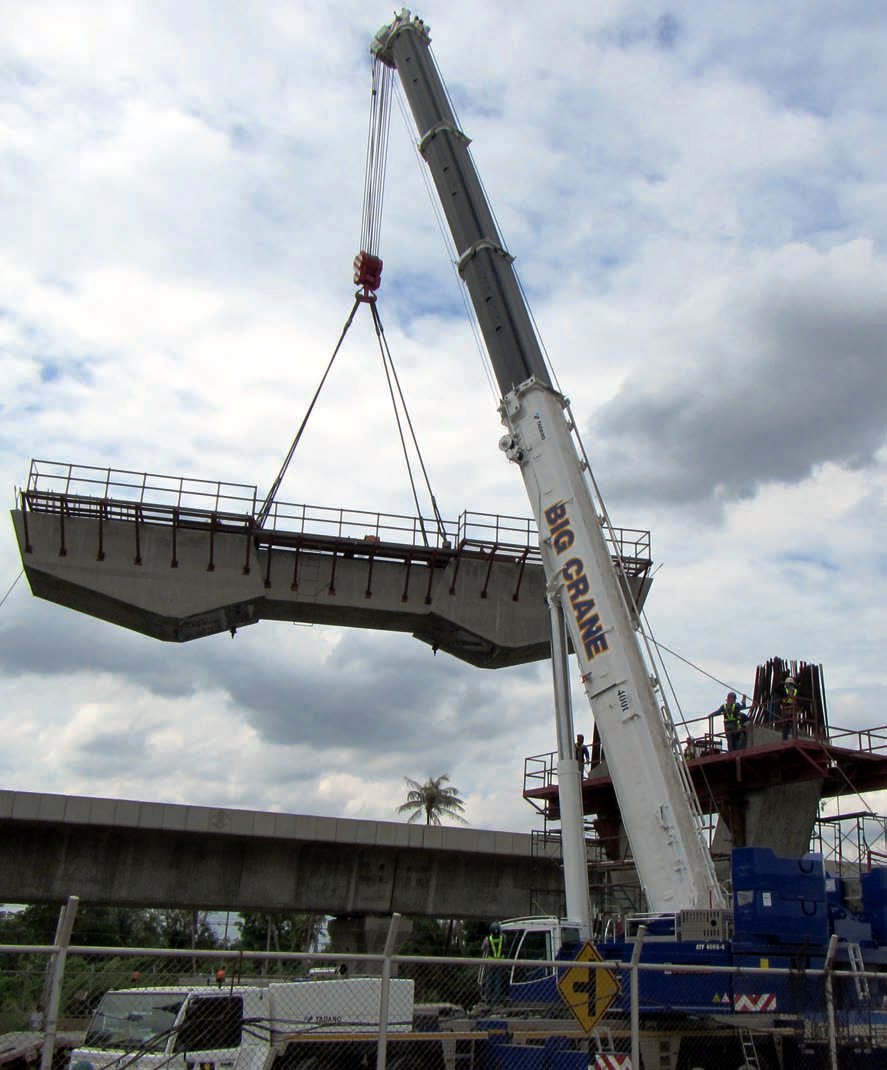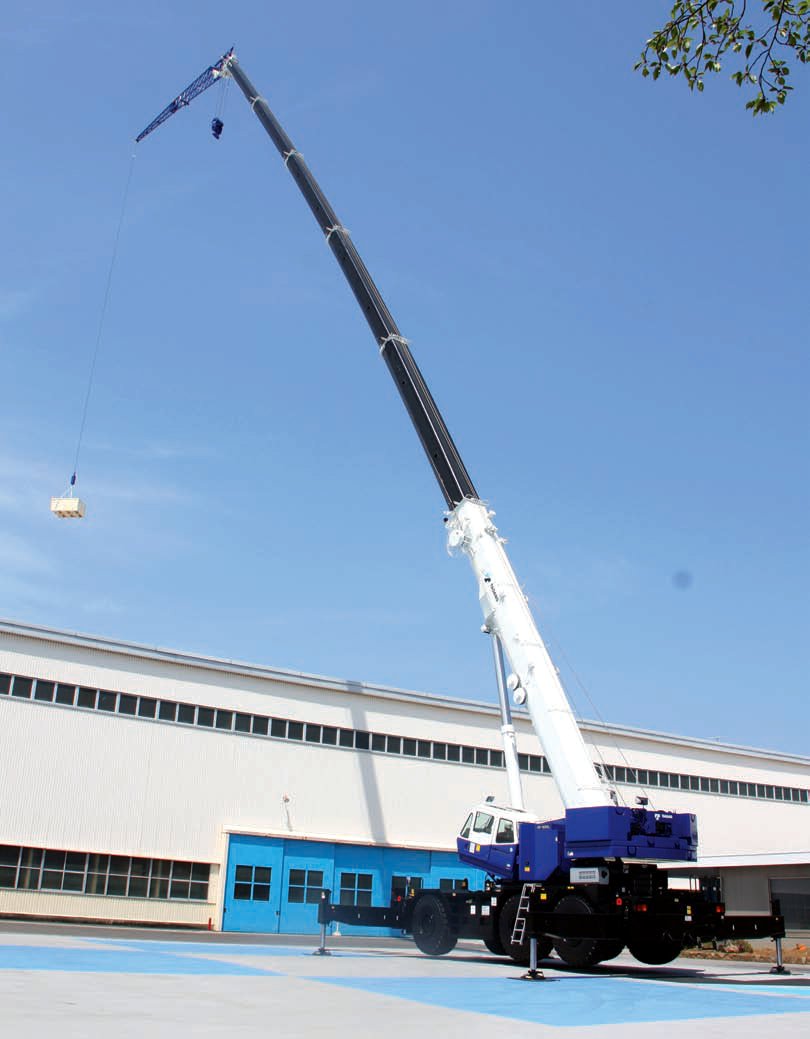From the seaside, to the ocean
17 September 2014The final stage of Cranes Today’s tour of Japan took Will North to the southerly island of Takamatsu. On first seeing its location in one of the country’s more rural regions, or folding stiff Western knees under a tatami table in one of the island’s traditional restaurants, it would be easy to think the company is, like its home, Japanese of the old school.
But, with impressive plants and direct links to the sea, as well as an ambitious policy of global acquisitions and expansions, it is perfectly located to serve its customers around the world, while bringing the best of the country's more modern traditions of design and production innovation.
Tadano has its roots in steel fabrication and was founded by Matsuo Tadano in 1919. The crane company was founded in 1948. Today, the company is run by the founder's grandson, Koichi Tadano.
The company's first hydraulic truck crane, the OC-2, came in 1955, followed by its first rough terrain in 1970, and then in 1992, its first all terrain, mounted on a Faun carrier.
When the company bought Faun, it began by importing carriers from Germany and mounted the crane in Japan. Today, it imports complete all terrains from Germany to Japan, with the exception of its top-of-the-range 550-tonner.
As well as building cranes in Japan and Germany to meet the demands of customers around the world, Tadano has recently been establishing new plants in developing markets. It has truck crane and components factories in China, and in 2012 opened new subsidiaries in India and Thailand.
Shido, the site of Crane Today's visit, covers 200,000 sq m, with 94,000 sq m under the roof. The company has 350 workers at the plant, with another 320 working in its offices, including 150 in research and development. Cranes can drive straight from the testing area, onto barges, for the short voyage to the major sea port at Kobe and onward shipment to the world.
Shido builds rough terrains and all terrains, as well as truck crane carriers and hydraulic cylinders.
Like so many Japanese cranes, the country's truck cranes have some unique features. Tadashi Suzuki, senior executive officer, says, "The rough terrain cranes are allowed to drive on the public roads here under certain limits. The design concept is therefore different.
"The all terrain cranes have historically been a very different product. Japanese all terrains are strong and heavy, and when they travel on the road, the customer will disassemble the boom and upper structure. They're used for heavy-duty work in Japan. Nowadays, the lighter and longer boom is getting popular. That was brought about by the introduction of our ATF products from Faun, and from some other European manufacturers coming in.
"The features of the Japanese all terrain is changing, but there is still demand for the conventional features of a Japanese all terrain. Our goal is to mix the features of the local and European all terrain. We've developed a full auto luffing jib, originally for Japanese customers, but it has proven popular worldwide."
Japanese and international telecrawlers have long been two separate beasts, with the Japanese machines focused on a short powerful boom. With its purchase of Mantis, as with that of Faun, the company is looking to bring some of the international approach to its home market.
Suzuki says, "We import Mantis [US-built telecrawlers] to Japan. We have to clear all of the local regulations and customs. Our main philosophy here is to make the Mantis machine an international machine, including Japan."
One of the company's most recent innovations on the world stage has been the development of the 160t GR1600-XL, probably the biggest rough terrain on sale internationally today. Shinichi Iimura, executive officer, international sales, says, "The demand for the big capacity rough terrains such as this, originally came from the US.
Currently this machine has been very well appreciated by customers there. In the US, there are many customers waiting for it, and in Australia there is demand for such high capacity rough terrains. We have already delivered some to Australia, and now enquiries are coming from Asia, the Middle East, Russia and South America."
Even Tadano's executives have been surprised by the success of the new machine. Suzuki says, " When we introduced the 100t, we thought that might be the biggest in the market.
With the 160t, people are rushing to buy it. The size of the cranes is getting bigger and bigger. Since 2007, our last record high, until 2013, when we broke the last record, our average tonnage increased by 10t in rough terrains. So we shifted ourselves to the bigger size of cranes. We also introduced the ATF400, and bigger sizes of all terrain cranes.
"Our machines are very much favoured in energy related industries. Outside of Japan, almost 65% of demand we see comes from the energy sector. They place a premium on reliabilty, quality and service. And in those areas, Tadano machines are very much appreciated by customers."
It's not just that direct drive from the testing ground to the sea that links Tadano to its customers. One of its other recent innovations has been its hello.net tele-diagnostic system.
Suzuki says, "With hello.net, we can detect all of the machines conditions, we can send warnings to customers when a part needs to be replaced, we can track replacement time. We can track operating conditions, so we can track what parts and maintenance will be needed. And we can develop a machine that will best fit the customer's requirements."
"This system has great potential: for R&D, service and management. We're currently building a global training centre, where we will invite our partners to learn how to build their business with our products, as well as about maintenance and repairs. That investment represents our values of safety, quality and service."

